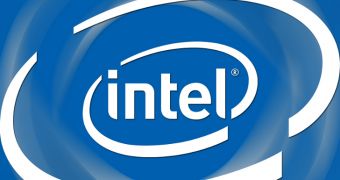Yesterday, Intel and HP, but mostly HP, really shook the world by revealing Project Moonshot, an admittedly spectacular new type of server that marks the ascension of the Atom brand on the server and data center market.
Now we get to see just what kind of product line the Atom S1200 SoC (system-on-chip device) is part of, along with some other CPUs.
There are actually three other low-power Atom SoCs that Intel made for servers and data centers, called the S12x9 family.
They are, to an extent, similar to the 64-bit S1200 with 1.6 – 2.0 GHz clock speed, but they aren't meant to act as primary processing platforms, not really.
Instead, they are supposed to bring together large numbers of storage devices.
More precisely, the S12x9 family have up to 40 lanes of PCI Express 2.0 bandwidth, or physical paths between the processor and I/O. RAID is supported, as is NTB failover.
Essentially, the S12x9 family is made for auxiliary storage arrays, not the primary computing system sections of large data centers.
That job still goes to the much more powerful and already established Xeon series, which now welcomes the E3, E5 and E7 families.
Of them, only the E7 supports the Intel Run Sure technology, which improves system reliability and data integrity, minimizing downtime at the same time. This is essential for mission-critical workloads.
Resilient System Technologies is another asset (standardized technology for processor, firmware, and software layers). It allows for recovery from previously fatal errors.
The E7, and E5 and E3 for that matter, are all based on the Haswell architecture, though E5 uses a better 22nm construction set for Q3 release, much like E7 will debut in Q4 with three times the memory capacity (up to 12 TB in 8-socket mode).
The lowest TPD model is an E3 chip of 13W (25% savings compared to previous generation).

 14 DAY TRIAL //
14 DAY TRIAL //